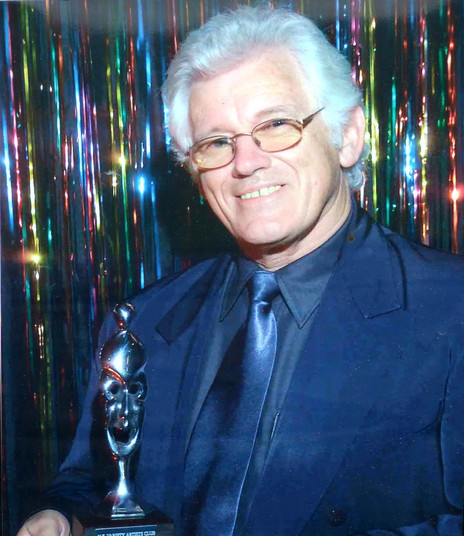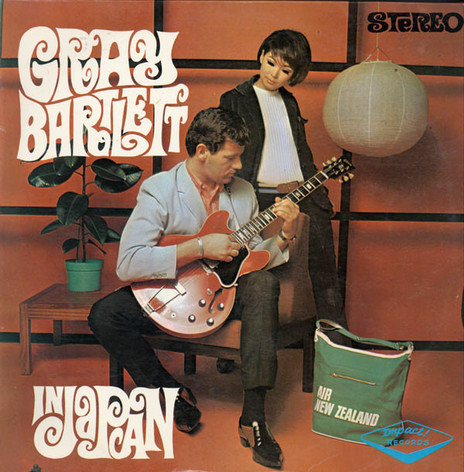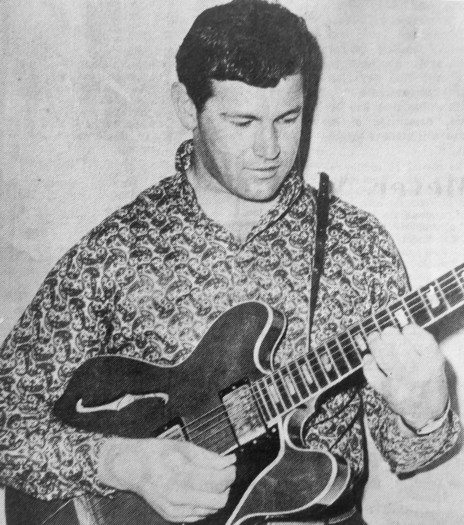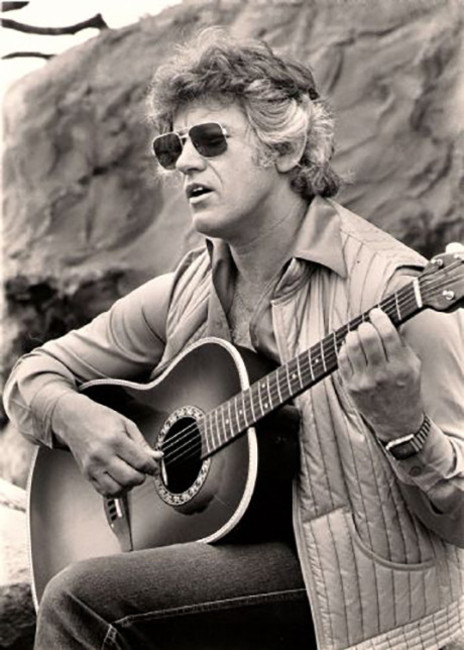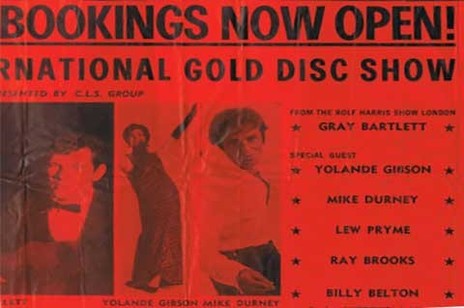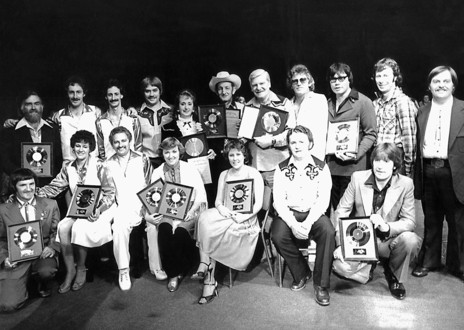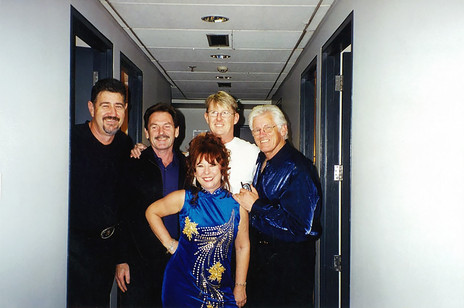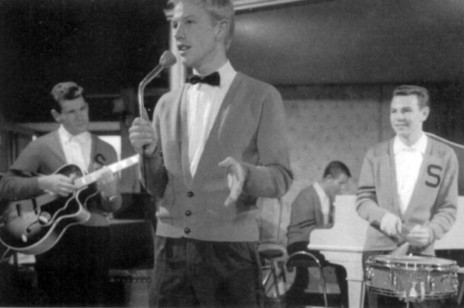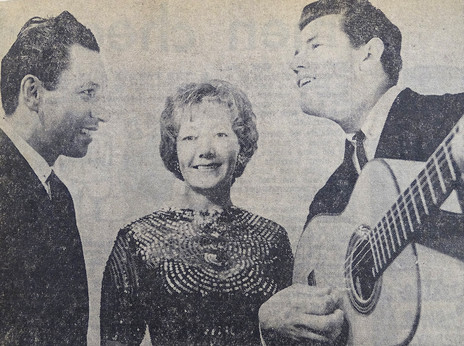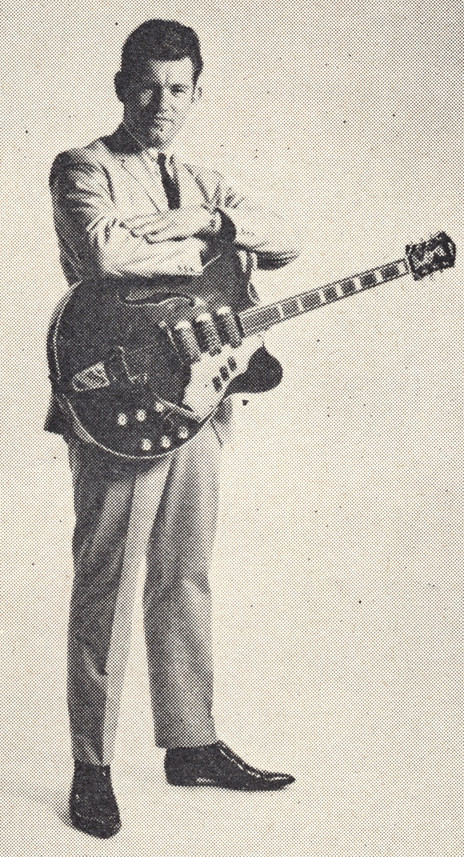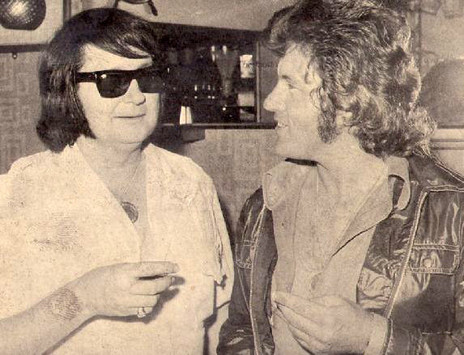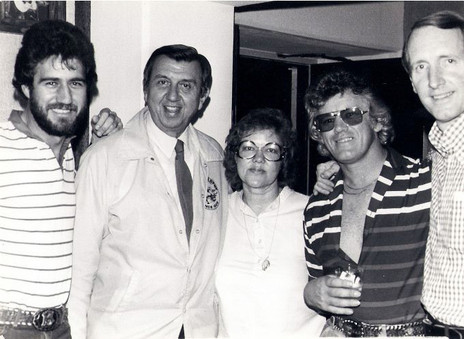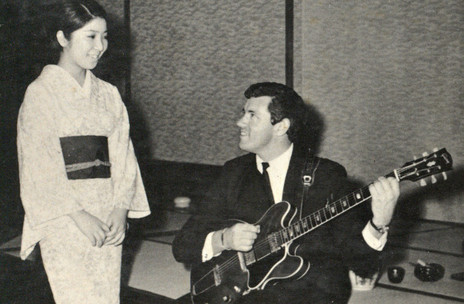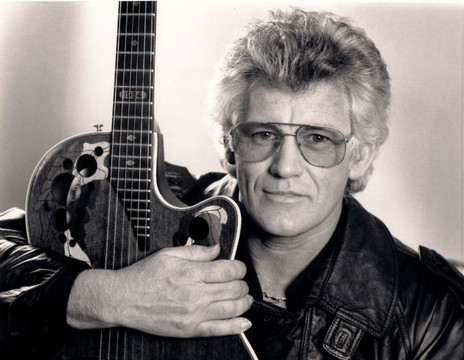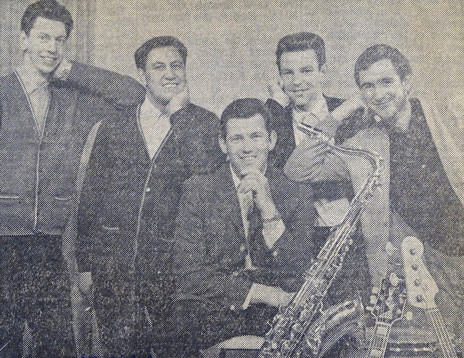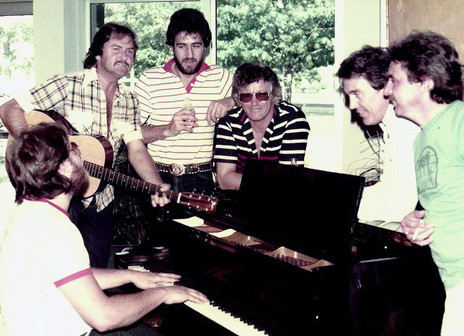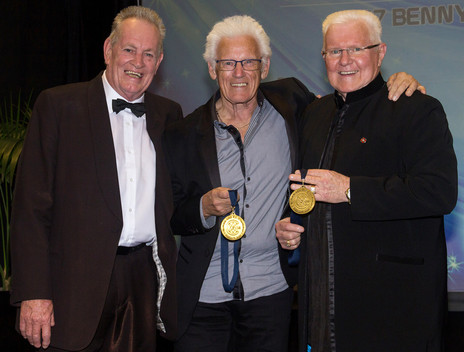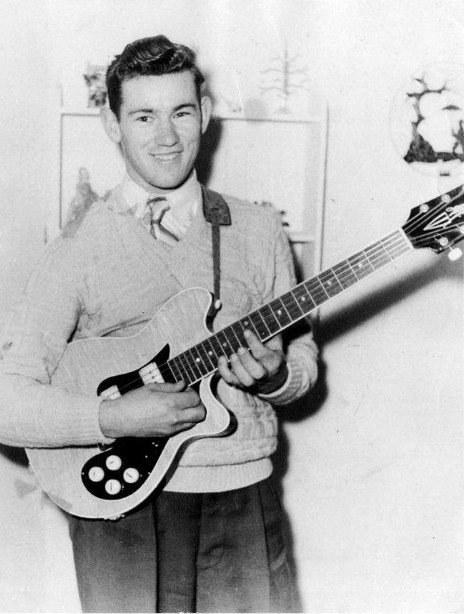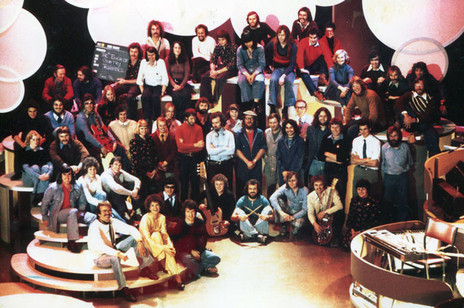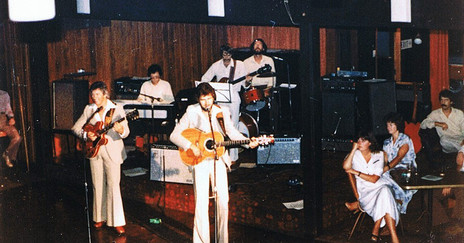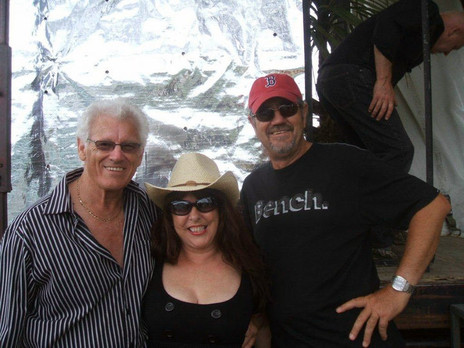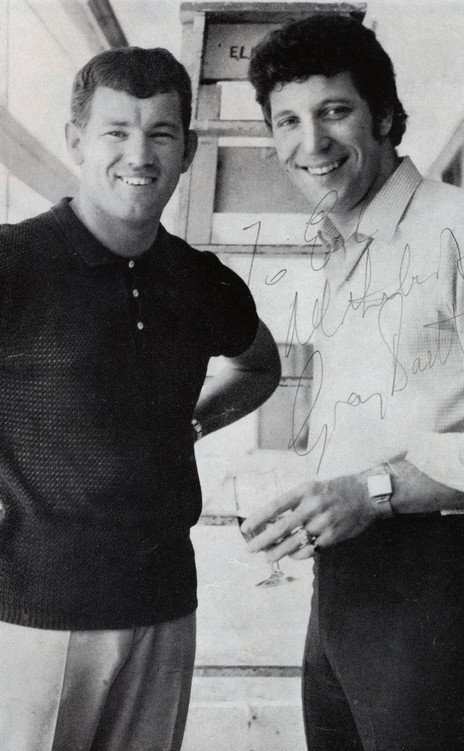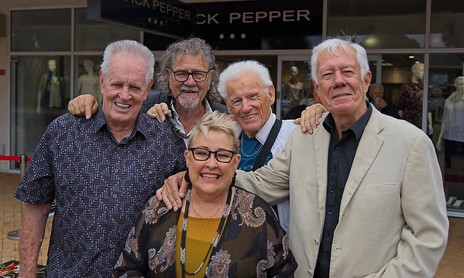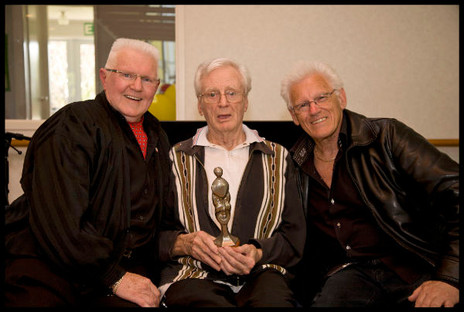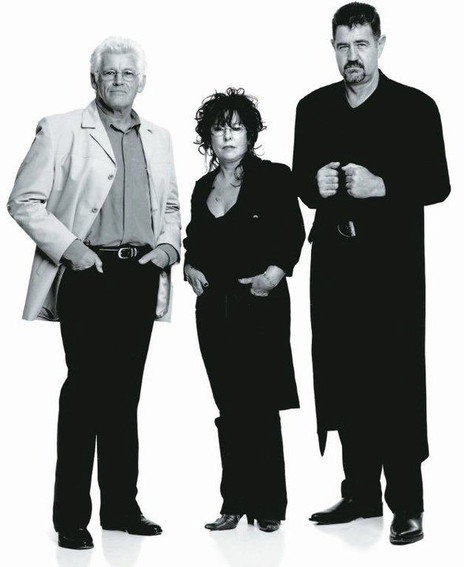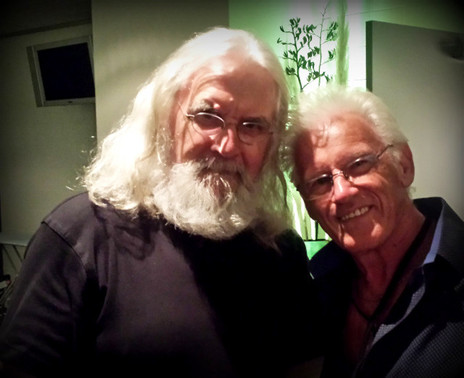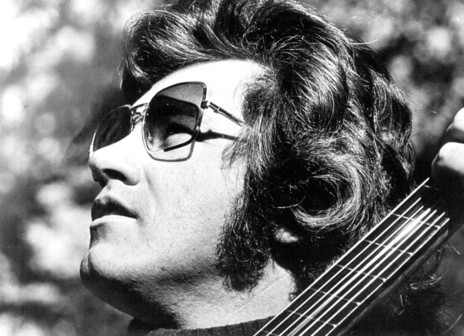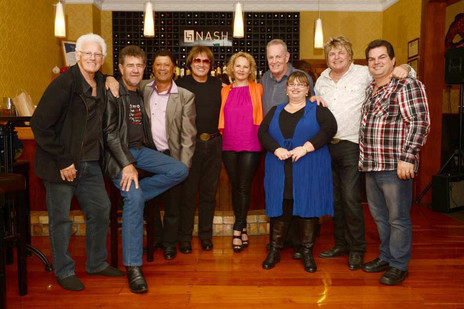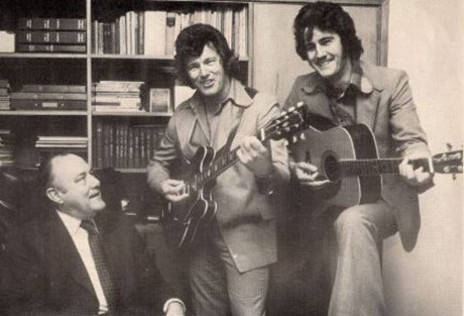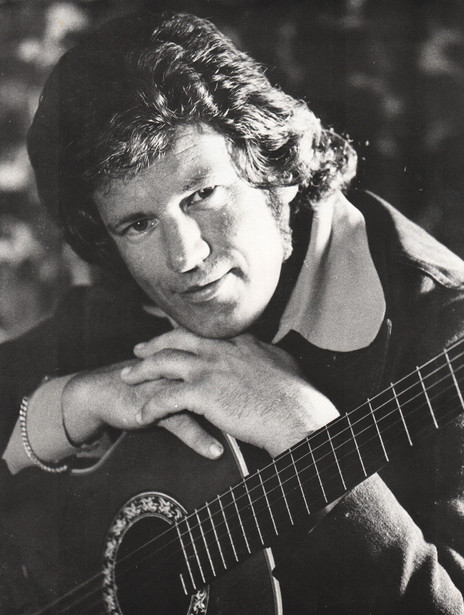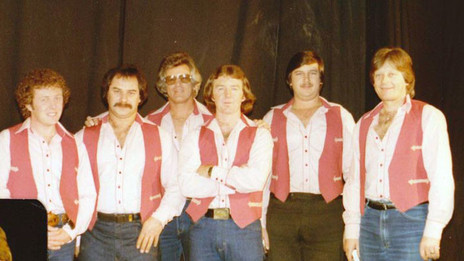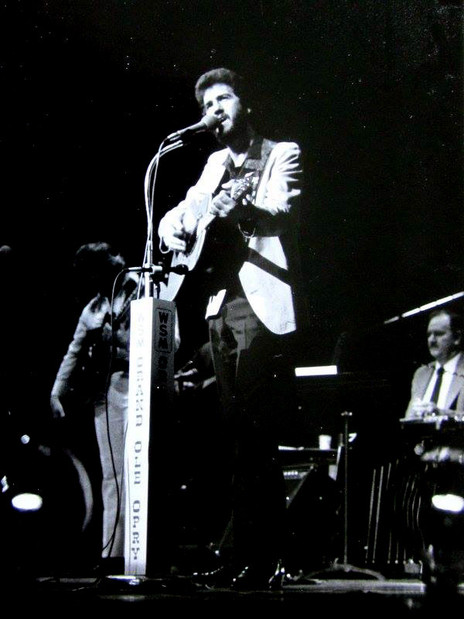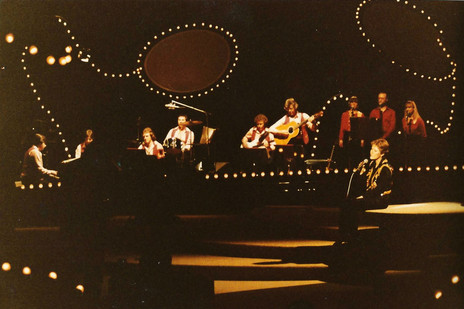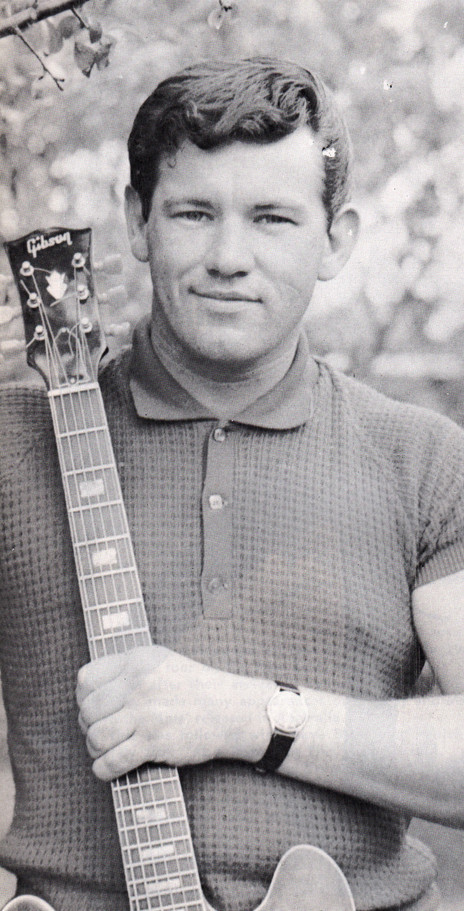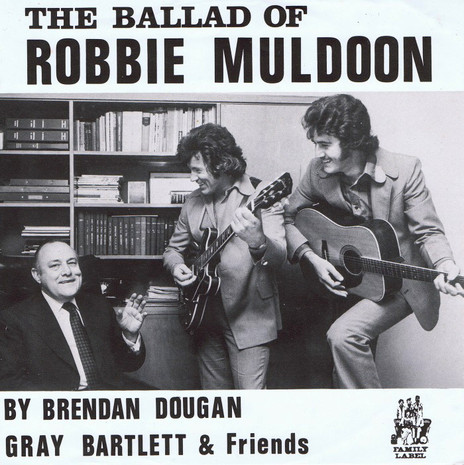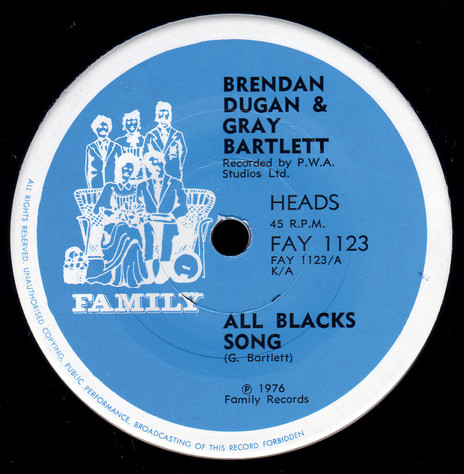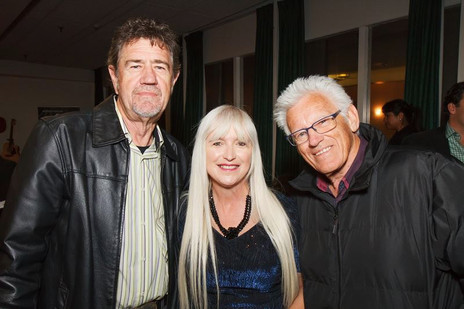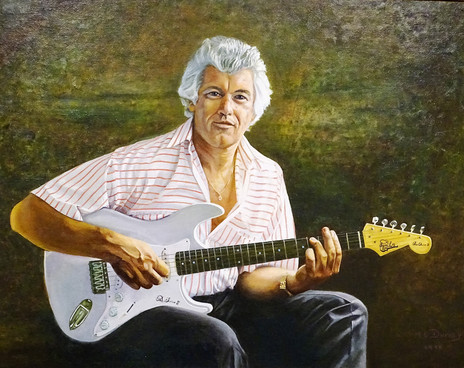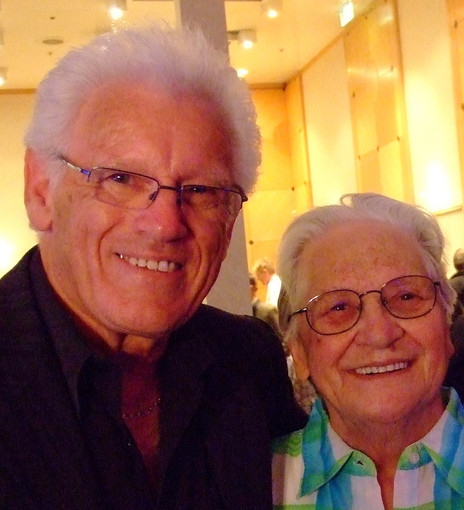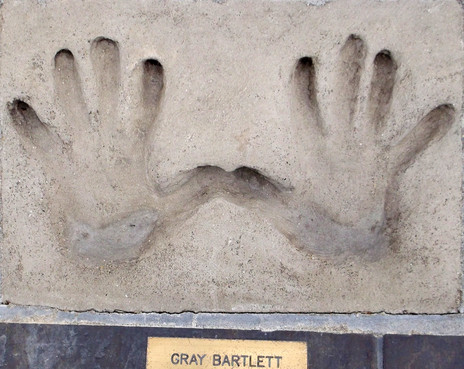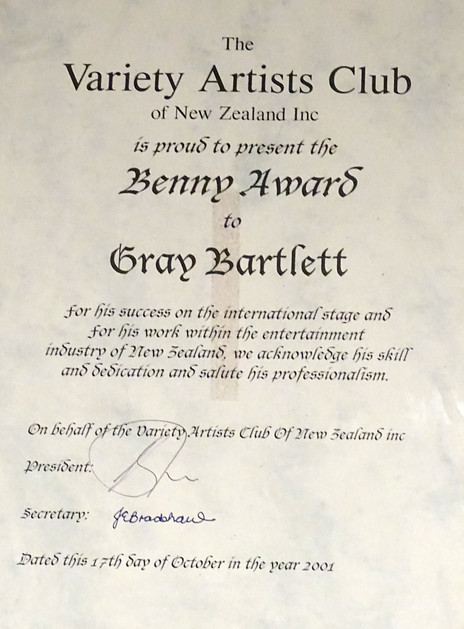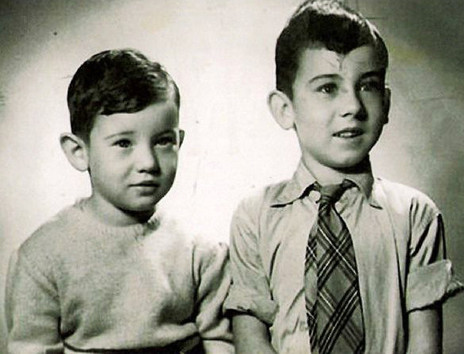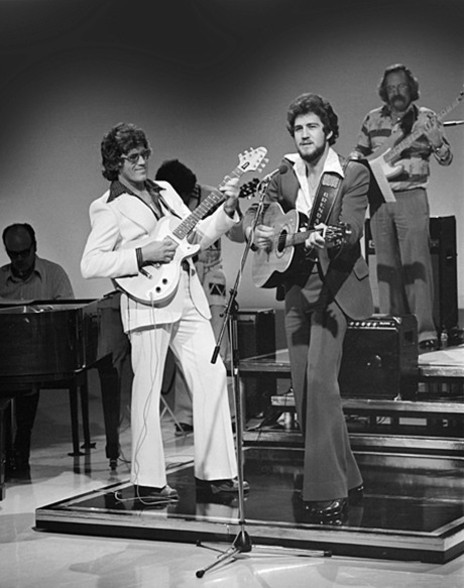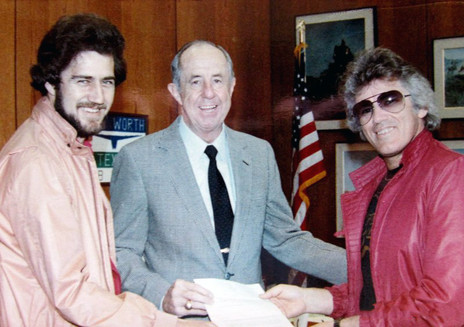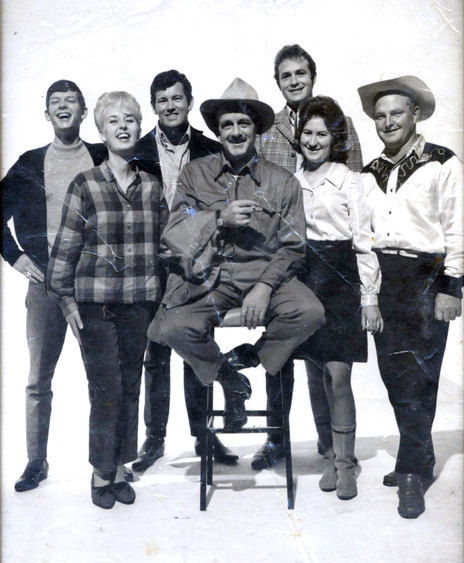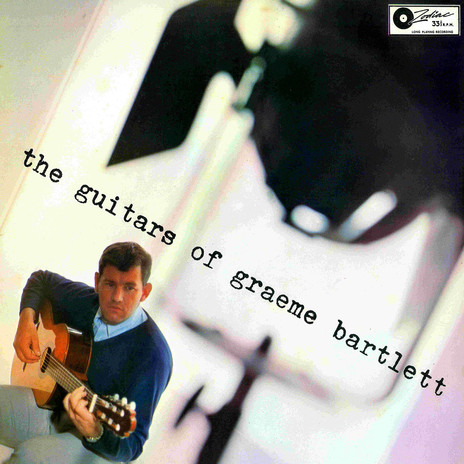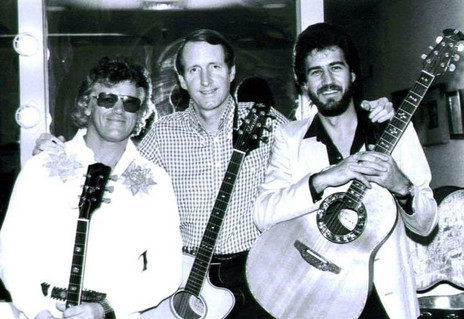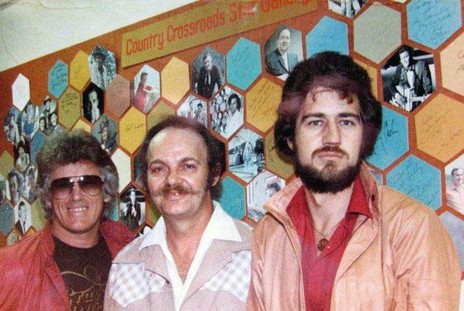Be it country music or the light classics, Bartlett has played it or promoted it. He has performed since his mid-teens, in the late 1950s, continuing well into the 2000s. In the 1960s, his own recordings cracked the Japanese market; later, he would make forays into China. In the 2000s, he assisted young artists such as Hayley Westenra enter the industry. New Zealand music, he has argued, has so much to offer the world if only it was supported properly at home and marketed properly abroad. But self-sufficiency and hard work from the artists themselves are the first steps.
Bartlett was born Graeme Neil Bartlett, in Auckland on 22 July 1942. His father Richard was originally from Cornwall, and a radio technician; his mother Martha emigrated from Scotland to Napier when she was a child. Bartlett grew up in Epsom as one of eight children. His older brother Barry gave him his first guitar lessons, on a Tex Morton guitar, and he earned the money for his own guitar – a Maton – delivering newspapers and mowing lawns.
His father Richard enjoyed singing harmony to whatever was playing on the radio; when Bartlett was first learning the guitar, the Louvin Brothers were often on the record player. An early influence was the jazz guitarist Mark Kahi, from the Hokianga but in the 1950s a top performer in Auckland and Christchurch. At the age of 12, Bartlett heard Kahi play ‘In the Still of the Night’ on 1YA; his next discovery was US country and western guitarist Chet Atkins.
But these early influences had to be considered against what the market demanded, Bartlett said later: “I played jazz initially but we’d be at dances and people would be asking, ‘could you play some rock n’ roll, sir?’ That taught me a huge lesson. If you’re only going to play one style of music you may not have a long career.”
Leaving school at 15, Bartlett began an electrician apprenticeship and, after answering a classified ad, joined an Auckland skiffle group, the Phantoms. When the group came second in a radio talent show Have a Shot in 1959, Bartlett took the result as encouragement to ditch the apprenticeship and become a professional musician.
Stints in other rock’n’roll groups quickly followed. He was a member of The Senators, with singer Clyde Scott, drummer Bruce King, and Peter Common on piano. Besides dances, the group was recruited by the Majestic Cinema, on Auckland’s Queen Street, to play at early screenings of US pop star Fabian’s movie Hound Dog Man.
The Senators were invited to audition to be the house band at Bob Sell’s restaurant The Colony, a pioneering Auckland nightclub. They stayed for three years. The residency brought Bartlett into the orbit of promoter/salesman Harry M Miller, who managed the Howard Morrison Quartet. After performing on Miller’s first Showtime Spectacular in 1961 – starring the Quartet – The Senators were offered work backing visiting artists such as Connie Francis, Gene Pitney and Cilla Black.
The Stereotones’ only single was an instrumental by Bartlett called ‘The Hound Steps Out’.
Also in 1959, Bartlett was a member of The Stereotones, a short-lived group which featured among its members Glyn Tucker on guitar and Bruce King on drums (the bassist Rick Laird later became a member of the Mahavishnu Orchestra). The Stereotones’ only single was an instrumental by Bartlett called ‘The Hound Steps Out’. Its release, on Prestige, was timed with the release of the film Hound of the Baskervilles, and for a week the group performed the song on stage before it screened. Through Bartlett’s friendship with local songwriter Gene O’Leary, the Stereotones backed the expatriate English singer Vince Callaher on several singles, and on a spontaneous Christmas tour of Northland dance halls.
“There was no such thing as bookings,” recalled King in 2011. “We set off in convoy, and stopped at Ruakaka. The hall was on the left-hand side of the road, and the promoters of the tour hired the hall on the spot. We swept the hall out, slept on mattresses we borrowed from local farmers, and played at night: for a whole week, including New Year’s Eve.”
The Graeme Bartlett Combo was formed in 1961, and recorded singles for Miller’s La Gloria, Eldred Stebbing’s Zodiac, and Octagon. It was the era in which The Shadows ruled, so these were guitar instrumentals, sometimes recorded multi-track in the style of Peter Posa. ‘Moon Man’ b/w ‘Dark Eyes’ – released as “The Multi Guitars of Graeme Bartlett” in 1963 – displayed a gritty, garage style: the two tracks were covers of recordings by Australian group The Atlantics.The Combo’s 1963 Zodiac single ‘Jet Walk’ (a Bartlett composition) appeared on eight local hit parades; Bartlett’s biggest hit while at Zodiac. Simon Grigg has written that the single was “A killer instrumental … and quite sought after.”
For Miller, the Combo backed visiting US acts Bobby Vee, Connie Francis, and Johnny Burnette at an Auckland Town Hall concert. Miller was disappointed in their performance, and called them out: he accused them of bluffing, and refused to pay their £6 fee. In the book Highway of Legends, Dianne Haworth describes this as an epiphany for Bartlett. He took lessons in reading music with a local teacher, Oliver Harris, and later thanked Miller for “a huge favour”. He was soon playing sessions for radio jingles, and touring in the backing bands of a variety of overseas acts, including Vera Lynn, Herman’s Hermits and Tom Jones.
Bartlett’s solo career began in 1963, and he put his studio experience to work recording tunes such as ‘The Wobbly’ b/w ‘Roller Coaster’, ‘The Harem’ b/w ‘Serenade to a Small Guitar’ and movie themes including ‘Thunderball’ b/w ‘Runaway’. He was often backed by The Sierras, whose drummer Wayne Daverne was Eldred Stebbing’s cousin, and together they backed singers including Ray Woolf, Mr Lee Grant, Ray Columbus and Toni Williams.
‘La Playa’ – a light bossa-nova instrumental – gave Bartlett an international following.
When ‘Serenade to a Small Guitar’ was given its original title – ‘La Playa’ – it would have the biggest impact on Bartlett’s career: the light bossa-nova instrumental gave him an international following.
Written by Jo Van Wetter, ‘La Playa’ was first recorded in 1964 by 20-year-old French guitarist Claude Ciari, for whom it was a hit in more than 40 countries, selling over a million copies. Bartlett was one of many who quickly followed suit. When originally released in New Zealand in late 1964 as ‘Serenade to a Small Guitar’, the b-side of ‘The Harem’, the single sold 250 copies. But in 1965 Bartlett’s version of ‘La Playa’ appeared on the soundtrack of a film made by a Greek company in Japan. It soon hit the charts there, peaking at No.2, and remaining in the Japanese charts for four months.
Auckland entertainment reporter John Berry – for a short period Bartlett’s manager – advised him to shorten his first name from Graeme to Gray: “Your name is too long for this industry.” (Bartlett noted in 1969 that he was called Gray on his New Zealand releases, and Graham or Graeme in Japan – where he was having most success.)
In late 1965, Berry gave Bartlett national coverage in the New Zealand Women’s Weekly. The feature – accompanied by photos of the guitarist and his instruments in a bright-red sportscar – said that the 23-year-old musician had little in common with the “parade of long-haired ‘beat’ guitarists on television and on stage.” Although he, like them, played guitar with electronic amplification, made hit records, appeared on television, and had many teenage fans, Bartlett was “a serious student of the guitar. When he is not playing his electronic instrument at a nightclub or on stage, or engaged in a recording session, he is most likely to be at home, practising with his classical-style acoustic guitar.”
Berry noted Bartlett’s intention to create music that crossed genres, and his ambition. While backing the Howard Morrison Quartet at the Rex Hotel in Sydney, Bartlett studied guitar under Jose Gonzales, a protégé of Andres Segovia. His goals were to get a pop record on the international hit parades, and to present a full recital of classical guitar music. By this stage, as well as his electric guitar, he was playing an acoustic handmade by Ramirez of Madrid, Segovia’s guitar makers. It cost Bartlett £268 to import to New Zealand.
Bartlett’s debut LP, The Guitars of Graeme Bartlett came out on Zodiac in 1966. It featured several of the earlier singles, including ‘La Playa’, as well as popular standards such as ‘Girl From Ipanema’, ‘Streets of Laredo’, ‘Java’ and ‘Yesterday’.
Another key break for Bartlett came in 1966, after the tour with Tom Jones. A rep from Kerridge-Odeon called to say that Rolf Harris needed a guitarist for his forthcoming New Zealand tour. “The pair got on like a house on fire,” wrote Haworth. When Harris returned to the UK, they kept in touch.
Meanwhile, Bartlett took himself to Japan in July 1967 to follow-up on the success of ‘La Playa’ (which had already sold 318,000 copies: by 1968 it would be 500,000 copies there – and it would keep selling). On his return a month later, he told the NZ Herald that he had gone to Japan without any definite work arranged; he now had seven months of appearances booked. He had paid his own fare there, he explained, and spent the first five days “cooling his heels”. Then, after performing at a cocktail party, he was invited to play at the Tokyo Hilton, and this was followed by work at the Latin Quarter, the High Take, the Music Club and five TV appearances. “I just couldn’t believe it was true”.
Bartlett returned to Japan in September 1967, and soon recorded an album at Mascot called Gray Bartlett in Japan for Benny Levin’s Impact label. (The cover features a geisha girl, a smartly dressed Bartlett, and an Air New Zealand carry-on bag.) The LP featured instrumental standards such as ‘The Third Man Theme’, ‘Johnny Guitar’ and ‘Dominique’ alongside ‘Blowin’ in the Wind’ and several Japanese tunes. (In 1968 he told the NZ Herald that he had been contracted by a Japanese recording company to record 56 tunes a year for them, and they guaranteed that his albums would sell 10,000 copies a year.)
In Swinging London, Bartlett became a sought-after session musician.
A telegram from Rolf Harris arrived from London later in 1967, inviting Bartlett to perform with him for a season at the Talk of the Town cabaret. Bartlett and his wife Jan, a singer, didn’t hesitate. In Swinging London, with Sgt Pepper just out, he became a sought after session musician, playing radio shows, gigs with Rolf Harris, Roy Orbison and Lonnie Donegan, and at top-rank venues including the Top of the Town and the London Palladium. After 18 months, he and his wife came home: they missed New Zealand, but he continued to work with Harris for several years.
Back in New Zealand, Bartlett worked on tours by Shirley Bassey and Slim Dusty, and on the Miss New Zealand shows promoted by Joe Brown. Working with the consummate showman from Mosgiel was “a fine grounding for his future career”, wrote Haworth. But over the next few years Auckland airport’s international lounge frequently saw Bartlett as he flew off to perform in London, Japan, Fiji and the US. (He would also record an album in London with John Boulter of The Black and White Minstrel Show.)
One of Bartlett’s early forays into business came in 1970 when he co-founded with his brother Barry a company to make guitar amplifiers in New Zealand. Gunn Industries’ managing director was Ken Wilson, who had worked with Vox as a sales rep, and the technical director was Brian Adamson. Barry handled finances, and Gray sales promotion. In a 1970 NZ Herald business story he announces a $50,000 contract to supply the amps to Australia. In some respects, he told the reporter, their amplifiers were better than those manufactured overseas by Marshall and Fender. (The firm had no connection with the amplifier company founded by Auckland jazz pianist Bennie Gunn, which was called Concord.)
In 1973 Bartlett met Brendan Dugan, who had won television talent show Studio One five years earlier, aged 16. Introduced to each other by Rusty Greaves, it was an encounter that would pay dividends for several decades. Bartlett and Dugan were signed by Lion Breweries to give 300 shows a year for the next seven years. “Financially, the contract provided them with a security seldom seen in the music industry,” wrote Haworth. “It was the best thing that could have happened, they agreed happily.”
Bartlett and Dugan were touring in 1975 when Bartlett had the idea of writing a tribute song to Robert Muldoon, the leader of the National Party about to contest a general election. “I found Muldoon totally different to how the media portrayed him,” Bartlett told Donna Chishom in 2016. “What I liked about him was that he was more like the ordinary guy down at the RSA than the Labour guy, who was more from university.” Muldoon, says the first verse of ‘The Ballad of Robbie Muldoon’, is the “greatest politician in the land. He taught us how to save our loot, he taught us how to be astute.” The third verse predicted big things for the forthcoming election:
Well Rob hasn’t got the top job yet,
But he’ll be hard to stop,
’Cause with all the other dead wood around,
Rob’s sure going to the top.
I’ve followed him and he taught me,
To handle money in harmony,
Robbie Muldoon from Tamaki,
The Tamaki National man.
The song was in the New Zealand charts for 11 weeks, peaking at No.4 three months out from the 1975 election, which was won by National, making Muldoon the prime minister.
From the mid-1970s Bartlett’s national profile was boosted when he became musical director on Christchurch TV show Touch of Country, which ran for three years from 1976. From 1980 he was musical director on its glitzier sequel, the primetime TVNZ show That’s Country. The hugely successful series ended in acrimony in 1984 after Bartlett and Dugan complained that associate producer Trevor Spitz – a TVNZ employee – gave preferential treatment to Suzanne Prentice, whom he also managed. Bartlett and Dugan were sacked from the show when they complained, but a government commission of enquiry showed their concerns were valid. However the commission only “mildly chastised” Spitz, wrote Redmer Yska in his account of the kerfuffle.
Bartlett began promoting other acts in 1981 when he created Gray Bartlett Enterprises, and toured acts such as Johnny Tillotson and Slim Whitman. These entrepreneurial activities increased with the founding of Pacific Region Entertainment with his wife Trish and friend Keith Gosling. They promoted and arranged tours for many overseas acts, including Ruby Turner and Boney M. In 1990 the firm merged with Ian Magan and Charles Brown to become Pacific Entertainment (sold to Sound Group in 2004, with Bartlett staying on as a consultant until 2007), and the international acts they toured included Diana Krall and Norah Jones. At the superstar level, the acts Bartlett helped bring to New Zealand include Michael Jackson on his HIStory tour, AC/DC, and Pavarotti at Mt Smart Stadium.
In 1990 Bartlett created the Together Again tour with his old That’s Country friends Brendan Dugan and Jodi Vaughan. This led, 15 years later, to one of his biggest successes as a promoter: the Highway of Legends tours. The first one, in 2005, was one of the quickest drawcards in New Zealand’s show business history, he recalled. “We sold out shows in half a day,” Bartlett told Chisholm. “We did three and the first two were monsters”. Among the other acts who performed during the Highway of Legends tours were Patsy Riggir and the Hamilton County Bluegrass Band.
Bartlett had been a mentor to Vaughan from early in her career; he also played a role establishing the careers of several crossover acts in the 2000s, among them Hayley Westenra, Annabel Fay, Elizabeth Marvelly, Yulia, and Ben Morrison.
Bartlett has recorded classical, jazz, country, easy listening, gospel and rock’n’roll.
Besides his promotional work and performances – including many tours of mainland China – Bartlett has continued to record during his long career. His releases have featured his own compositions and interpretations of melodies beyond the country music with which he has been long associated. He has also covered classical, jazz, country, easy listening, gospel and rock’n’roll. After The Guitars of Graeme Bartlett and Gray Bartlett in Japan albums in the mid-1960s came over 30 others, among them Fijian Girl (1968), We’re All Alone (1978), Hot Guitars (1982), Shades of Gray and Guitar By Candlelight (both 1985). Happy Anniversary in 1986 was followed in 2008 by 50th Anniversary and, in 2013, The Sixties Collection. There have also been many albums and singles in collaboration with artists such as Dugan, Vaughan, and Eddie Low. In 1986 came a Father’s Day single, recorded with 1ZB star Merv Smith, ‘My Dad’; the b-side was Bartlett’s instrumental, ‘Theme for Dad’.
Bartlett’s 2016 album Private Conversations received a witty accolade from guitarist Hank Marvin, whose work with The Shadows had been an inspiration, and whom Bartlett had toured as a visiting artist:
“Gray Bartlett is something of an institution in New Zealand, well that’s what he told me. Seriously folks I’ve had the pleasure of getting to know Gray over the last couple of years and discovered that he’s a man of various talents. However it’s his musical talent that really stands out on his latest CD, Private Conversations, which allows him to display both his virtuosity and versatility as a guitarist, which reminds me I need to practice more. The choice of material is diverse, engaging and he interprets the compositions with clarity and sensitivity; qualities that many guitarists lack. Gray’s command of different guitar techniques is also demonstrated as he switches easily from beautifully performed finger-style acoustic, to slide guitar, to country rock and even to heavy blues rock; yes, our boy has serious chops. Check out Gray’s version of ‘Apache’ it’s almost as good as mine.”
In the 1990s, Bartlett’s interest in politics became more active. In the 1990 general election was a National candidate for Parliament, contesting the seat of Panmure against Judith Tizard (the local MP since 1987, after her father Bob retired); she won by 1100 votes. But that year he won a seat for the Auckland City Council: he served on the council for 11 years and chaired the Auckland City Art Gallery board for nine.
“I’m sort of a National supporter, but not really,” he told Chisholm in 2016. “You tend to get that Remmers establishment type. And that’s not me. There are some bloody good people who are part of that, like Rosie Horton, but there are others who are boring as shit. I like what John Key has done, but I wouldn’t go so far as to say I like the National Party.”
Never shy of the media, Bartlett has often been quoted about the lack of respect for New Zealand musicians, especially country acts. He has called out for more government support, while also criticising many funding decisions. He perceives a bias against country music, and grants being made for political reasons such as regionalism or fashion, rather than talent.
Bartlett himself has received many accolades. Most prominent among them is his MBE, awarded in 1987 for services to the arts and music; in 2012 he was awarded a Queen’s Jubilee Medal for charity work. He has been a long-serving patron of many organisations, among them the Variety Artists’ Club, which gave him a Benny award in 2001. For his many years as a patron, the VAC awarded him a President’s Medallion in 2017.
